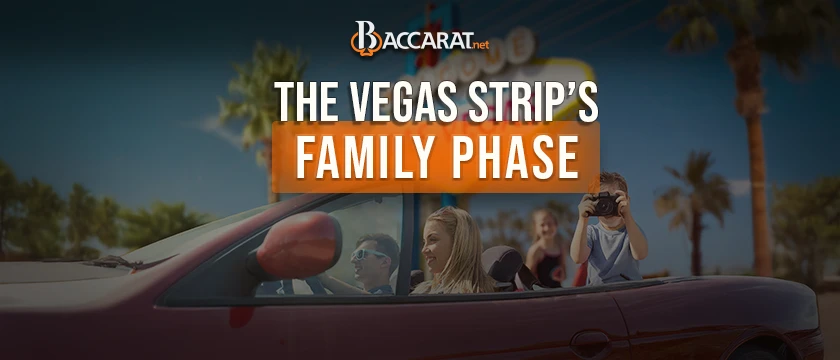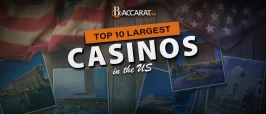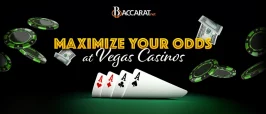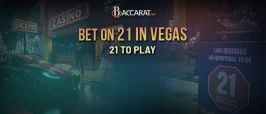Why Las Vegas Failed as a Family-Friendly Destination

Las Vegas is best known for gambling, nightlife, and adult-oriented entertainment. It’s a place many online baccarat players dream of visiting to try their luck at the tables and use their winnings to explore all that the city has to offer. However, in the 1990s, the city known as “Sin City” attempted a major rebrand with the aim of positioning itself as a family-friendly vacation destination. The rebrand sparked a number of ambitious projects in Vegas intended to attract families, but it ultimately failed.
A Vision of Family-Friendly Las Vegas
The vision to attract families began with the idea that broadening the appeal would result in higher visitor numbers. Resorts and casinos invested a great deal of money. They were envisioning amusement parks, family-oriented shows, and attractions designed to cater to younger visitors. MGM Grand opened MGM Grand Adventures in 1993, a 33-acre amusement park that featured roller coasters, water rides, and themed attractions. Similarly, Circus Circus created the Adventuredome, an indoor amusement park filled with rides and games suitable for all ages, as it attempted to capture the attention of families.
Despite the investment and high hopes, the family-friendly approach encountered immediate problems. MGM Grand Adventures was designed to be a landmark attraction, but it struggled from the outset. High operational costs coupled with underwhelming attendance made it financially unsustainable. The park attempted to adapt by transitioning to seasonal operations in 1998 but eventually closed completely in 2000. Analysts attributed its failure primarily to stiff competition from established California theme parks such as Disneyland and Universal Studios.
Families from California, which is a critical demographic for Las Vegas, had little incentive to travel to Nevada for amusement park experiences they could find closer to home.
The family-oriented Caesars Magical Empire faced similar struggles. Opened in 1996, the elaborate, immersive attraction aimed at teenagers and young adults featured magic shows, dining, and fantasy-themed interactive experiences. However, its high entry cost, ranging from $125 to $200 per person, and mixed reviews from visitors led to its closure by 2002.
Lasting Attractions Amidst the Failures
However, not all family-focused ventures failed. Several attractions opened during this era are still open and continue to attract visitors:
- The Circus Circus Adventuredome remains popular and draws substantial crowds with its wide array of rides and entertainment.
- New York-New York’s roller coaster has become a Las Vegas staple and offers visitors a thrilling experience that remains popular decades after it opened.
- Mandalay Bay’s artificial beach and wave pool successfully attract both families and adult visitors.
- M&M’s World and various family-friendly magic and comedy shows, such as Mac King’s show at Excalibur, continue to appeal.
Nonetheless, despite these successes, the overall attempt to reposition Vegas as a family destination proved unsustainable. The Strip tried appealing to families and failed, largely due to the economic reality of family attractions, which typically generate lower revenue compared to casinos and nightclubs. While families increased in number from 7% of visitors in 1992 to 12% by 1996, the demographic shift wasn’t significant enough to offset the costs associated with family-focused investments.
An Identity Crisis and a Return to Roots
While the rebranding was taking place, Las Vegas found itself with an identity crisis. Its global reputation as an adult playground conflicted with the family-friendly vision. Visitors and casino operators alike were split, which caused fragmented brand identities.
This issue was exemplified by the 2003 transformation of the Treasure Island pirate show, “The Battle for Buccaneer Bay”, which was originally intended as family entertainment, into “The Sirens of TI”, a show that was very much adult-orientated. It was part of a broader shift away from family-oriented marketing, as casino operators were faced with the realities of attracting families at the expense of their core adult customers.
Today, Las Vegas embraces its adult-oriented roots. The famous slogan “What Happens Here, Stays Here”, which was adopted in the early 2000s, captures the current spirit of the city. However, Vegas does still offer some family-friendly attractions, ensuring it is still able to cater to a wide range of visitors. With visitor numbers continuing to grow and revenues increasing, it seems that the Vegas of today has found a balanced and sustainable approach.



